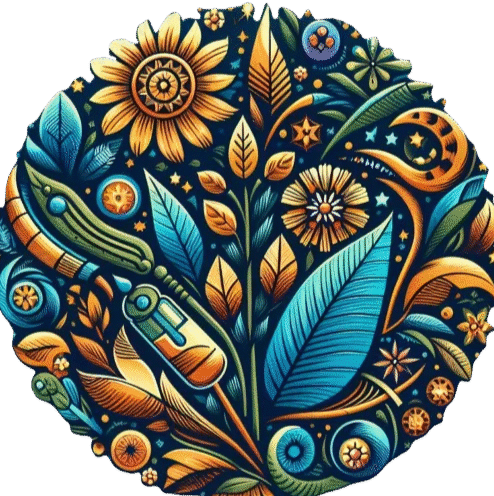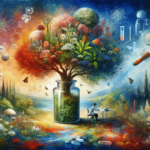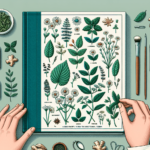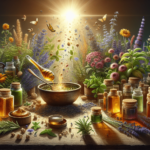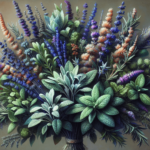Imagine stepping into a world where plants hold the secrets to healing, restoration, and rejuvenation. This is the essence of the captivating realm of herbology. From ancient civilizations to modern-day holistic practices, the art of herbology has persisted as a timeless, intricate study of the powerful properties found in nature’s green wonders. Through the careful observation and scientific exploration of herbs, this age-old tradition has become a valuable tool in promoting wellbeing and nurturing the body, mind, and spirit. In this article, we will embark on a journey to uncover the magic and mystique of herbology, and discover the limitless potential that lies within the realm of herbal remedies.
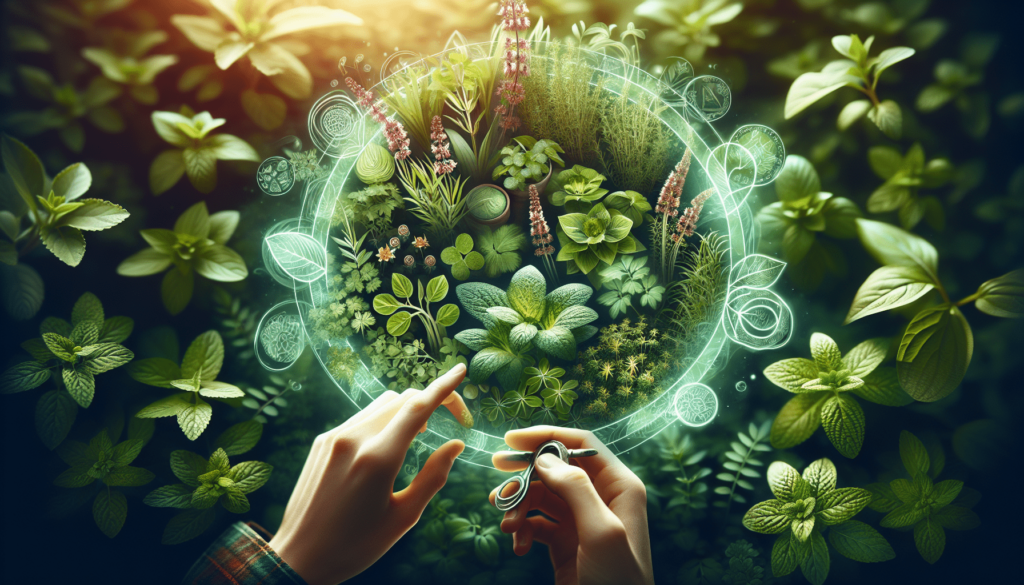
A Brief Introduction to Herbology
What is herbology?
Herbology, also known as herbalism, is the study and practice of using plants and herbs for medicinal, culinary, or aromatic purposes. It is an ancient practice that dates back to the beginning of human history. Herbology involves understanding the properties, uses, and benefits of various plants and utilizing them in different ways to promote health, wellness, and overall well-being.
The history of herbology
The history of herbology is deeply intertwined with human civilization. The use of plants for medicinal purposes can be traced back to ancient civilizations such as the Egyptians, Greeks, and Chinese. These early societies understood the healing powers of plants and developed sophisticated systems to categorize and utilize herbs for various ailments.
In ancient Egypt, for example, medicinal herbs played a crucial role in their belief system and healing practices. They used herbs like aloe vera, garlic, and chamomile to treat a wide range of conditions. Similarly, ancient Greek physicians like Hippocrates relied heavily on herbs for their medicinal properties and contributed to the development of botanical medicine.
The importance of herbology in modern times
Despite the advancements in modern medicine, herbology continues to play a significant role in our lives. Many people are turning to natural remedies and herbal alternatives for their health and wellness needs. The appeal of herbology lies in its holistic approach, as it focuses on treating the root cause of an ailment rather than just addressing the symptoms.
Moreover, herbs offer a gentle and non-invasive way to support the body’s natural healing processes. With the rise of chronic diseases and the increasing recognition of the importance of preventive healthcare, herbology provides a valuable tool for maintaining overall well-being.
Different Types of Herbs
Culinary herbs
Culinary herbs are herbs that are primarily used for flavoring and enhancing the taste of food. These herbs are commonly found in kitchens and are used in cooking to add aroma, color, and flavor to various dishes. Some popular culinary herbs include basil, rosemary, thyme, parsley, and oregano.
Not only do culinary herbs add depth and complexity to recipes, but they also offer potential health benefits. For example, basil is rich in antioxidants and has anti-inflammatory properties, while thyme contains compounds that have antibacterial effects.
Medicinal herbs
Medicinal herbs, as the name suggests, are herbs that are used for their therapeutic properties. These herbs have been traditionally used for centuries to address a wide range of health concerns and improve overall well-being. Some well-known medicinal herbs include echinacea, ginger, ginseng, and chamomile.
Medicinal herbs can be consumed in various forms such as teas, tinctures, capsules, or extracts. They are often used to support the immune system, reduce inflammation, alleviate stress, promote digestion, and enhance overall vitality.
Aromatic herbs
Aromatic herbs are herbs that are known for their pleasant and distinctive smells. These herbs are used to add fragrance, aroma, and therapeutic benefits to various products such as perfumes, essential oils, soaps, and candles. Lavender, peppermint, rosemary, and lemongrass are examples of aromatic herbs.
These herbs have calming and uplifting properties that make them popular in aromatherapy practices. Inhaling the scents of aromatic herbs can have a soothing effect on the mind and body, helping to reduce stress, improve mood, and enhance relaxation.
The Art of Growing Herbs
Choosing the right location
When it comes to growing herbs, selecting the right location is crucial. Most herbs thrive in well-drained soil and require ample sunlight. Choose an area in your garden that receives at least six hours of direct sunlight every day. Additionally, ensure that the soil is well-draining, as herbs generally prefer soil that is not overly moist.
Preparing the soil
Before planting your herb garden, it’s essential to prepare the soil properly. Start by removing any weeds or unwanted plants from the area. If the soil lacks nutrients, consider adding organic matter such as compost or aged manure to enrich it. This will ensure that your herbs have access to the nutrients they need to grow and thrive.
Planting and caring for herb seedlings
Once the soil is prepared, it’s time to plant your herb seedlings. Dig small holes for each seedling, ensuring that they are spaced adequately to allow for growth. Gently remove the seedlings from their containers and place them into the holes, making sure to cover the roots with soil. Water the seedlings immediately after planting to help them settle in.
To care for your herb seedlings, water them regularly, but be careful not to overwater as this can lead to root rot. Keep an eye out for pests and diseases and take prompt action if needed. Prune your herbs regularly to promote bushier growth and remove any dead or diseased leaves. Also, consider using organic fertilizers to provide additional nutrients to your herbs.
Harvesting and preserving herbs
Harvesting herbs at the right time is crucial to ensure optimal flavor and potency. For most herbs, the best time to harvest is in the morning when the aromatic oils are at their peak. Use a pair of sharp scissors or pruning shears to cut the herbs just above a node, leaving enough of the plant intact for regrowth.
To preserve your harvested herbs, there are various methods you can use. Drying herbs is a popular and simple technique. Hang them upside down in a cool, well-ventilated area until they are completely dry, then store them in airtight containers away from direct sunlight. Alternatively, you can freeze herbs by chopping them finely and placing them in ice cube trays with water or oil.
Popular Herbs and Their Uses
Basil: Culinary and medicinal benefits
Basil is a versatile herb that is commonly used in Mediterranean and Asian cuisines. It has a sweet and slightly peppery flavor that pairs well with tomatoes, pasta, and salads. In addition to its culinary uses, basil also offers several medicinal benefits. It contains antioxidants that help protect against cell damage, as well as antibacterial and anti-inflammatory properties.
Lavender: Aromatic and relaxation properties
Lavender is a well-known aromatic herb loved for its calming and soothing properties. Its distinctive scent is often used in perfumes, soaps, and other beauty products. Lavender essential oil is commonly used in aromatherapy to promote relaxation and relieve stress. Additionally, lavender can be used to infuse desserts, teas, and drinks with a delicate floral flavor.
Echinacea: Boosting the immune system
Echinacea is a powerful medicinal herb that has been used for centuries to support immune health. It is often consumed as a tea or taken as a supplement to help prevent and alleviate symptoms of the common cold and flu. Echinacea is believed to have immune-stimulating properties and can help reduce the duration and severity of cold symptoms.
Chamomile: Promoting sleep and relaxation
Chamomile is a well-known herb with calming properties. It is commonly consumed as a tea to promote sleep, reduce anxiety, and soothe digestive discomfort. Chamomile tea is caffeine-free and can be enjoyed in the evening as a natural remedy to help unwind and prepare for a restful night’s sleep.

Herbology in Traditional Medicine
Traditional Chinese herbal medicine
In Traditional Chinese Medicine (TCM), herbology plays a significant role as a holistic approach to healthcare. Chinese herbal medicine utilizes a combination of herbs and natural substances to restore balance and promote overall well-being. Practitioners of TCM use herbal formulas tailored to individual patients’ needs to address various health conditions and imbalances.
Ayurvedic herbology
Ayurveda, an ancient holistic healing system from India, also places great importance on herbology. Ayurvedic herbology focuses on balancing the individual’s unique constitution and treating the root cause of imbalances. Herbal remedies are commonly used to support digestion, strengthen the immune system, enhance vitality, and maintain overall health and wellness.
Native American herbology
Native American herbology has a rich tradition that dates back centuries. Indigenous tribes used herbs for various purposes, including medicinal, spiritual, and ceremonial practices. Native American healers would often rely on their knowledge of local plants to create herbal remedies for specific ailments. Today, Native American herbology continues to be an integral part of cultural traditions and natural healing practices.
Creating Herbal Remedies
Infusions and decoctions
Infusions and decoctions are two common methods used to extract the medicinal properties of herbs. Infusions are made by steeping herbs in hot water, while decoctions involve simmering the herbs in water for a longer period. Both methods allow the herbs’ beneficial compounds to be released into the liquid, creating a potent herbal remedy.
Infusions are often used for delicate parts of the plants, such as flowers and leaves, while decoctions are more suitable for tougher plant materials like roots and barks. These herbal preparations can be consumed as teas or used externally for various purposes, such as rinsing the hair or soothing skin irritations.
Tinctures and extracts
Tinctures and extracts are concentrated forms of herbal remedies that contain the active compounds of the herbs in a liquid form. They are typically made by steeping the herbs in alcohol or a mixture of alcohol and water, which extracts the medicinal properties. Tinctures and extracts are highly potent and have a longer shelf life compared to other herbal preparations.
Tinctures are commonly used as oral remedies, with small amounts added to water or other beverages. They are convenient and allow for precise dosing. Extracts, on the other hand, are often used in the formulation of herbal supplements, skincare products, or can be added to food recipes.
Salves and ointments
Salves and ointments are topical herbal preparations used for their soothing and healing properties. They are typically made by infusing herbs into carrier oils, such as olive oil or coconut oil, and then adding beeswax to create a semi-solid consistency. Salves and ointments can be applied directly to the skin to alleviate various conditions, including dryness, inflammation, minor wounds, and skin irritations.
These herbal preparations provide a gentle and natural alternative to conventional creams and lotions. They can be customized by adding different herbs and essential oils to target specific skin concerns and enhance the overall effectiveness of the product.
Herbal Teas and Infusions
Benefits of herbal teas
Herbal teas offer a delightful way to enjoy the flavors and benefits of herbs. Unlike traditional tea, which is made from the leaves of the Camellia sinensis plant, herbal teas are typically made from a variety of herbs, flowers, and fruits. They are naturally caffeine-free and can be enjoyed throughout the day.
Herbal teas offer a wide range of benefits depending on the herbs used. For example, peppermint tea can aid digestion and relieve symptoms of indigestion, while ginger tea can help soothe an upset stomach. Chamomile tea is known for its calming effects on the mind and body, making it an excellent choice for relaxation and sleep support.
Popular herbal tea blends
Herbal tea blends are combinations of different herbs and botanicals carefully curated to provide specific flavors and benefits. These blends often bring together herbs with complementary properties to create a unique and enjoyable tea experience.
Some popular herbal tea blends include:
-
Sleepy Time Blend: This blend typically incorporates herbs such as chamomile, lavender, and lemon balm, which promote relaxation and support restful sleep.
-
Immune Boosting Blend: Commonly composed of herbs like echinacea, elderberry, and rose hips, this blend is designed to strengthen the immune system and protect against colds and flu.
-
Digestive Aid Blend: Incorporating herbs like peppermint, ginger, and fennel, this blend helps support healthy digestion, relieve bloating, and ease digestive discomfort.
How to make herbal infusions
Herbal infusions are a simple and effective way to extract the flavors and health benefits of herbs. To make an herbal infusion, follow these steps:
-
Boil water: Bring water to a boil using a kettle or stovetop.
-
Prepare herbs: Place the desired amount of herbs in a teapot or infuser. Use about one teaspoon of dried herbs or one tablespoon of fresh herbs per cup of water.
-
Pour boiling water: Pour the boiling water over the herbs and cover the teapot or infuser with a lid or a small plate. Let the herbs steep for the recommended amount of time, usually between 5-10 minutes, depending on the herbs used.
-
Strain and enjoy: After steeping, strain the herbs from the liquid and pour the herbal infusion into your favorite cup or mug. You can add sweeteners, such as honey or stevia, to enhance the flavor if desired.
Herbal infusions can be enjoyed both hot and cold, and you can experiment with different herb combinations to create your own unique blends.
Herbs for Natural Beauty and Skincare
Herbal face masks and scrubs
Herbs have long been used in skincare rituals to enhance natural beauty and promote healthy skin. Herbal face masks and scrubs are a wonderful way to treat your skin and address specific skin concerns.
For a soothing and rejuvenating face mask, mix powdered herbs like chamomile, lavender, and rose petals with some natural ingredients such as honey or yogurt. Apply the mask to your face, leave it on for 15-20 minutes, then rinse off with warm water. This will leave your skin feeling refreshed, nourished, and glowing.
Herbal scrubs can help exfoliate and remove dead skin cells. Mix finely ground herbs like oatmeal, lavender, and calendula with a carrier oil like coconut oil or almond oil. Gently massage the scrub onto damp skin, then rinse off to reveal smoother, softer skin.
Herbal infused oils for skincare
Herbal infused oils are an excellent way to harness the therapeutic properties of herbs for skincare. To make an herbal infused oil, select dried herbs such as lavender, chamomile, or calendula and place them in a clean jar. Cover the herbs with a carrier oil of your choice, such as jojoba oil or olive oil, and seal the jar tightly. Allow the mixture to infuse for several weeks in a cool, dark place, shaking the jar occasionally to promote the infusion process.
Once the oil is ready, strain out the herbs, and you will be left with a fragrant and potent herbal infused oil. This oil can be used as a moisturizer, massage oil, or as a base for making herbal salves, balms, and lotions.
Hair care with herbs
Herbs are also beneficial for nourishing and enhancing the health of your hair. Herbal rinses, masks, and oils can address various hair concerns such as dryness, dandruff, and hair loss.
For a herbal hair rinse, steep herbs like rosemary, nettle, and horsetail in hot water for 30 minutes. After shampooing and conditioning your hair, strain the herbs and pour the herbal rinse over your hair, making sure to massage it into your scalp. This rinse can help strengthen the hair, promote shine, and stimulate hair growth.
Herbal hair masks can be made by combining powdered herbs like hibiscus, fenugreek, and amla with a natural base like yogurt or coconut milk. Apply the mask to your hair, focusing on the roots and ends, and leave it on for 30 minutes before rinsing thoroughly. This will provide deep nourishment and hydration to your hair, leaving it soft, silky, and manageable.
Using Herbs in Culinary Creations
Flavoring dishes with fresh herbs
Fresh herbs are a fantastic way to elevate the flavors of your culinary creations. Whether you are preparing a simple salad, a hearty pasta dish, or a fragrant curry, adding fresh herbs can take the taste to a whole new level.
When using fresh herbs, it is important to know how to handle and incorporate them into your dishes properly. Most herbs have delicate leaves and flavors that can be easily overpowered if cooked for too long or at high temperatures. To preserve their freshness and aromatic qualities, it is best to add herbs towards the end of cooking or as a garnish.
To release the maximum flavor, gently bruise or chop the herbs right before using them. This helps to activate the aromatic oils present in the herbs and infuse your dish with their delightful scents and flavors. Remember, a little goes a long way, so start with a small amount and adjust to your taste preferences.
Drying and storing culinary herbs
Drying herbs is a common method of preserving their flavor and extending their shelf life. It is especially useful when you have an abundance of fresh herbs from your garden or if you want to store herbs for future use.
To dry herbs, start by harvesting them when they are at their peak, just before they flower. Carefully wash the herbs and pat them dry with a paper towel to remove any excess moisture. Tie them into small bunches with twine or rubber bands and hang them upside down in a dry, well-ventilated area away from direct sunlight.
Once the herbs are fully dried, which can take anywhere from a few days to a few weeks depending on the herb and humidity level, remove the leaves from the stems and store them in airtight containers. Label the containers with the name of the herb and the date of drying for easy reference.
Herb-infused oils and vinegars
Infusing oils and vinegars with herbs is a wonderful way to add depth, complexity, and aromatic notes to your culinary creations. Herb-infused oils can be used for cooking, dressing salads, and marinating ingredients, while herb-infused vinegars can be used in dressings, sauces, or simply as a flavorful drizzle.
To make herb-infused oils, select fresh herbs with robust flavors such as rosemary, thyme, or basil. Wash the herbs and thoroughly pat them dry, then place them in a clean glass jar. Cover the herbs completely with a high-quality oil of your choice, such as olive oil or sunflower oil. Seal the jar tightly and let the flavors infuse for at least a week, shaking the jar occasionally to distribute the flavors.
For herb-infused vinegars, follow a similar process using a good-quality vinegar like apple cider vinegar or white wine vinegar. Choose herbs like tarragon, dill, or sage for their vibrant flavors. The herbs and vinegar should be left to infuse for a minimum of two weeks, shaking the jar occasionally to enhance the infusion process. Once ready, strain the herbs from the oil or vinegar, and transfer the infused liquid to clean bottles or jars for storage.
Herb Gardening Tips and Tricks
Companion planting for herbs
Companion planting is a gardening technique that involves planting compatible plants together to maximize their growth and enhance pest control. When it comes to herb gardening, incorporating companion plants can help improve plant health, deter pests, and increase yields.
For example, planting aromatic herbs like basil, rosemary, or lavender alongside vegetables like tomatoes or peppers can help repel insect pests and attract beneficial pollinators. Similarly, planting herbs like chives, dill, or parsley near cabbage plants can deter certain pests that are attracted to cabbage family plants.
Researching the specific needs and preferences of different herbs and identifying their compatible companion plants can help create a harmonious and thriving herb garden.
Managing pests and diseases
Pests and diseases can pose challenges in herb gardening, but there are various natural methods to manage them without resorting to harmful chemicals. Here are a few tips:
-
Maintaining healthy plants: Ensure that your herbs are grown in optimal conditions, including proper soil preparation, adequate sunlight, and appropriate watering. Healthy plants are less susceptible to diseases and pests.
-
Proper spacing: Give your herbs enough space to promote good airflow and prevent overcrowding. This can reduce the chances of fungal diseases and inhibit the spread of pests.
-
Regular inspection: Regularly inspect your herbs for signs of pests or diseases such as yellowing leaves, chewed foliage, or wilting. Early detection can help prevent the problem from escalating.
-
Natural pest control: Consider using natural pest control methods such as introducing beneficial insects like ladybugs or lacewings to your garden. You can also use organic sprays made from ingredients like neem oil or insecticidal soap to control pests.
Year-round herb gardening
With proper planning and care, it is possible to enjoy fresh herbs year-round. Here are a few strategies for year-round herb gardening:
-
Indoor herb gardening: Many herbs can be successfully grown indoors on a sunny windowsill or under artificial grow lights. Choose compact varieties and provide them with adequate light, appropriate containers, and well-draining soil.
-
Season extension: Extend the growing season of outdoor herbs by utilizing protective measures such as row covers, cloches, or cold frames. These structures can help shield your herbs from frost and cold temperatures during the colder months.
-
Preserving herbs: Harvest and preserve herbs at their peak to have a supply throughout the year. Dry herbs by hanging them or use other preservation techniques such as freezing in oil or making herbal vinegars.
By implementing these strategies, you can enjoy the flavors and benefits of fresh herbs no matter the season.
In conclusion, herbology offers a treasure trove of knowledge and possibilities in promoting health, wellness, and culinary creativity. From the ancient practices of traditional medicine to the modern application of herb-infused oils and herbal teas, herbs continue to captivate our senses and nurture our bodies. Whether you have a sprawling herb garden or a windowsill filled with potted herbs, the art of herbology invites you to explore, experiment, and embrace the incredible world of plants. Happy herb gardening!
